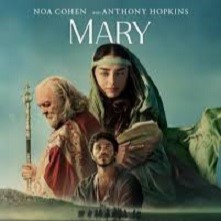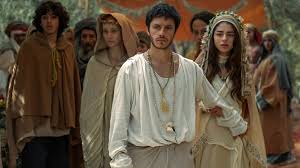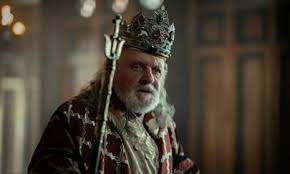Mary, new biblical film, Netflix

Many Catholics were looking forward to this film. Here is a review and and the suggestion for an online assessment by Fr Edward Looney, Green Bay diocese, theologian and Marian scholar. Link at the end of this review.
Noa Cohen is Mary, Anthony Hopkins is Herod.
Almost immediately, Mary looks straight to camera telling us to trust her, that we do not know her story at all. And, by the end of the film, we realise that, apart from the key Gospel scenes of the infancy narratives, just how much inventiveness there is in this storytelling. It is the work of screenwriter, Timothy Michael Hayes who is credited in the Internet Movie Database note, as responsible for “inventive biopics”. This is certainly the case here (and we might agree with the familiar declaration during the final credits that, while based on actual characters, characters and events have been reworked for dramatic purposes.
It was only in the second and third centuries that Christians wanted to know more about the biblical characters, creating alternative narratives, different Gospels, giving names to characters who are not even mentioned in the Gospels, especially Mary’s parents, Joachim and Anne. The screenwriter has drawn on some of these apocryphal Gospels, especially the proto-evangelion of James, as well as the visions of mystics like Maria of Agreda and Anne Catherine Emmerich, the latter one of the inspirations for Mel Gibson’s The Passion of the Christ.

With the focus on the young Mary, her elderly parents praying for a child, their dedicating her to the temple, Mary as a young student at the temple, the encounter with Joseph…the film might well be described as a Young Adult interpretation of Mary aimed at the young adult audience. But, while the film might have been open to younger children’s audiences but the Mary stories interwoven with the dramatic history of Herod the Great, played by Anthony Hopkins in his mid-80s like a King Lear gone wrong, with some very bloodthirsty sequences, his torture of the High Priest, and the expected massacre of the innocents.
Filmed in Morocco, one of the difficulties is that the film’s sense of geography, Nazareth in Galilee, Jerusalem in the south, Bethlehem near Jerusalem, is rather skewiff, especially the closeness here of Nazareth to Jerusalem.
The screenplay also draws on some familiar Gospel themes and applying them these characters, Joachim fasting for 40 days and 40 nights in the desert, the visitation with Mary and Elizabeth, Mary under suspicion for her pregnancy and the possibility for her being stoned…
One of the difficulties of the screenplay is the frequent appearance of Gabriel, always in blue, sinister rather than angelic and also Satan with taunts and temptations for Mary. Which means then that Mary as the mother of the Messiah seems to be fairly common knowledge not only for her family, but for the high priest, for Herod, and for the people, the knowledge of the bright star signalling Jesus birth. Not exactly the Gospel perspective on the gradual awareness of Jesus and his mission.
One Gospel character does get some welcome attention, the prophetess Anna in the Temple, friend and protector of Mary (a credible and welcome interpretation of her role), with a frail Simeon coming in with his words to Mary of the sword piercing her heart.

There will be a variety of responses to this film, biblical scholars probably not enthusiastic at all, ordinary viewers, not familiar with Gospel details and literary forms, enjoying it at the Young Adult level mixed with swords and sandals atmosphere.
Peter Malone MSC
American priest, from Green Bay diocese, Edward Looney, theologian with an emphasis on Marian studies, was invited to write almost immediately an analysis of the screenplay for Crisis Magazine, relating it to the Gospels, and noting the influences of the early alternate Gospels and the visions of the mystics. It is well worth Googling:
https://crisismagazine.com/opinion/the-unrecognizable-netflix-mary